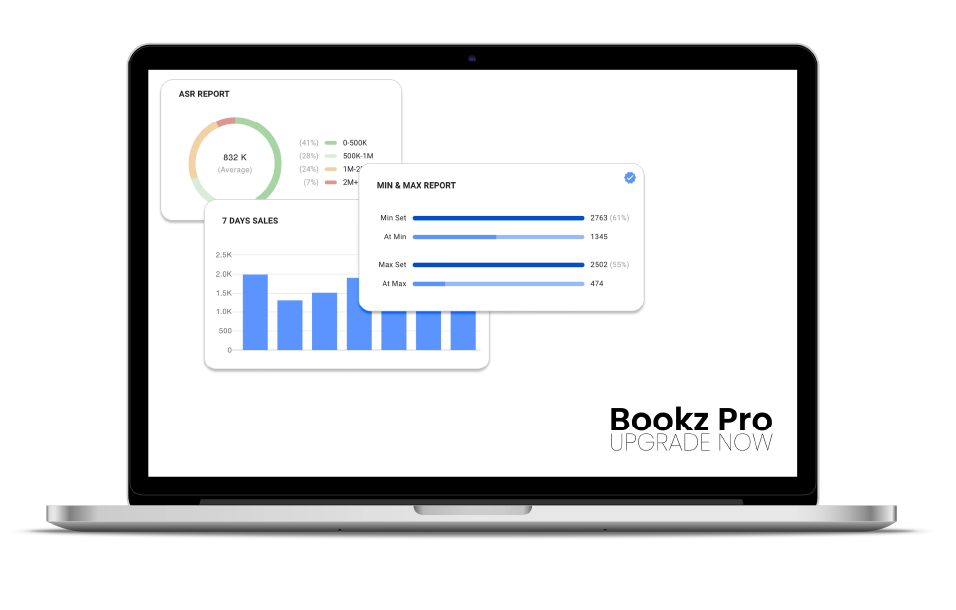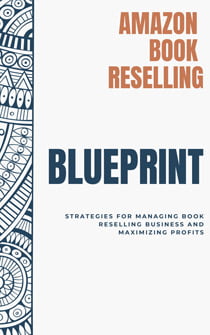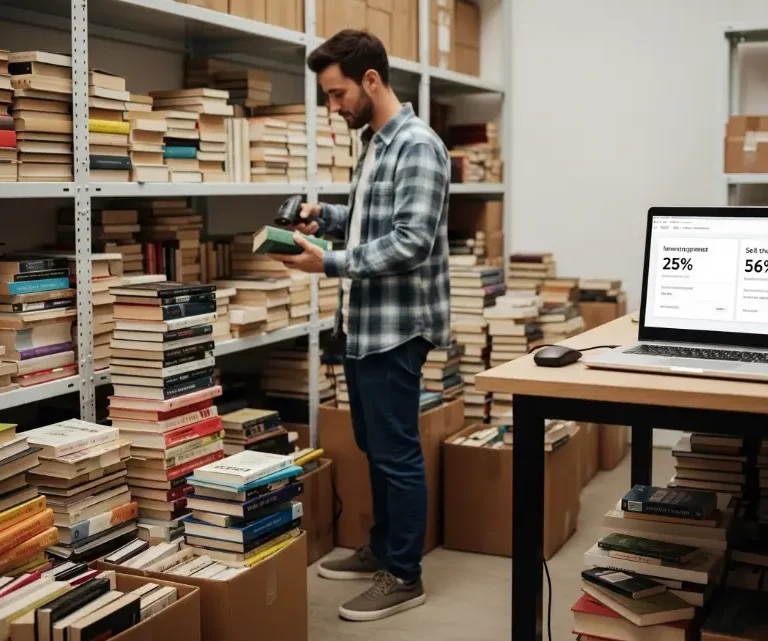Amazon Referral Fee Explained: What Every Seller Needs to Know

If you’ve ever sold something on Amazon—or are thinking about it—you’ve probably come across the term referral fee. At first glance, it might sound like just another line item buried in your seller account, but it’s one of the most important fees to understand if you want to run a profitable business on the platform.
Whether you’re selling books, gadgets, or skincare products, this fee plays a significant role in how much you earn at the end of the day. In this guide, we’ll break down how referral fees work, the typical rates by category, and how you can manage them to protect your margins. Let’s make sure you know exactly where your money is going—and how to keep more of what you earn.
What Is the Amazon Referral Fee?
The Amazon referral fee is a commission Amazon charges sellers for each item sold on its platform. Instead of a flat fee across all products, this fee is typically calculated as a percentage of the total sale price, including shipping and any gift wrapping costs.
The referral fee helps cover the cost of hosting your products on Amazon’s marketplace and giving you access to their massive customer base. Think of it like a service charge for using Amazon’s platform to reach millions of buyers.
The exact percentage varies depending on the product category. For example, selling books might come with a different referral fee than selling electronics or clothing. Most categories have rates between 8% and 15%, but some go higher or have minimum charges applied.
Understanding this fee is key to accurate pricing and profit calculation.
How Amazon Calculates the Referral Fee
Amazon calculates the referral fee as a percentage of your product’s total sales price. This includes the item price, plus any shipping or gift-wrapping charges the buyer pays. The rate itself depends on the product category—some are lower, while others can be a bit higher.
For most categories, the referral fee ranges from 8% to 15%, but it can increase to 20% or more for specific items, such as Amazon device accessories or jewelry. Some categories also have a minimum referral fee, usually around $0.30 per item, which means you’ll still pay that amount even if the percentage fee comes out to less.
Let’s say you sell a book for $25 with $3.99 shipping. If the referral fee for books is 15%, Amazon would charge 15% of $28.99, which equals $4.35. That amount is automatically deducted from your sale.
Knowing these percentages helps you price smarter and avoid surprises.

Referral Fee by Category: Common Rates in 2025
Referral fees aren’t one-size-fits-all—Amazon sets different rates depending on the category of the item you’re selling. Understanding these rates can help you make more informed sourcing and pricing decisions, especially if you’re selling in multiple niches.
Here’s a breakdown of some of the most common categories and their referral fees in 2025:
- Books – 15% of the total sales price. This has been the standard for years and remains unchanged in 2025. Whether you’re reselling used books or flipping rare finds, it’s something every book seller needs to account for.
- Electronics – Typically around 8%. This lower percentage helps offset the usually higher price points of gadgets like phones, tablets, and accessories.
- Clothing & Accessories – 17% on average. This is one of the higher referral fee categories due to the volume and return rates, so it’s important to factor this in when pricing fashion items.
- Beauty & Personal Care – 8% for items priced over $10, and 15% for items under $10. This tiered structure encourages sellers to list higher-value beauty products, so it’s worth considering if you’re in this category.
- Home & Kitchen – 15% is the standard here. This includes everything from cookware to furniture and decor, making it a popular but competitive space for sellers.
These percentages are deducted automatically when a sale is made. They won’t appear as a separate charge, but are reflected in your final payout.
Ways to Minimize the Impact of Referral Fees
While you can’t avoid Amazon’s referral fees altogether, there are innovative ways to reduce their impact on your bottom line. By applying a clear pricing strategy, you can protect your profits and make more confident pricing decisions.
Here are some practical tips to help you manage referral fees more effectively:
1. Choose Lower-Fee Categories When Possible
If you’re flexible with what you sell, consider exploring product categories with lower referral fees, such as electronics (around 8%) or certain beauty items priced over $10 (also 8%). While not every seller can easily pivot categories, knowing where fees are lower can help guide future sourcing decisions.
2. Bundle Products to Increase Order Value
Bundling related items (like a book set or skincare combo) not only provides more value to buyers but also helps you absorb referral fees. Since the fee is percentage-based, selling a higher-priced bundle gives you more room to cover costs and still make a solid profit.
3. Use Profit-Tracking Tools
Third-party tools can help you track referral fees and other Amazon charges in real time. This makes it easier to analyze your margins per product and adjust your strategy when needed. Staying on top of the numbers means fewer surprises when payouts come in.
4. Monitor Listings and Reprice Strategically
Sometimes, a slight price adjustment can improve your margin while still keeping your item competitive. Whether you manually adjust your prices or use an automated repricer, make sure your selling price accounts for all Amazon fees, not just the referral percentage.
Referral fees are part of Amazon selling, but smart strategies can reduce unnecessary costs and maximize your actual profit.
All in One Software
for Book Sellers
Scout Better – List Faster – Reprice Smarter
Over 30% Business Growth
Achieved by Our Clients

How Referral Fees Affect Your Profit Margins
While referral fees might seem small on the surface, they can make a noticeable dent in your profit margins, especially if you’re working with low-priced or low-margin items. That’s why understanding how these fees fit into your overall cost structure is key to staying profitable.
Selling a $20 book with a 15% fee and $2 cost quickly reduces your margin—leaving you with only $8–$10 in actual profit.
If you’re selling in a category with a higher referral fee—like clothing at 17%—that impact becomes even more significant. And if you’re not careful, fees can eat up a good chunk of your revenue before you even realize it.
To stay profitable, make sure you:
- Use a referral fee calculator to estimate your true profit before listing an item.
- Track all your costs, including sourcing, shipping, and Amazon’s other fees.
- Adjust your pricing to make sure you’re covering all expenses and still earning a fair margin.
The more visibility you have into these charges, the better decisions you can make when sourcing products or setting prices.
Referral Fees vs. Other Amazon Selling Fees
Referral fees are just one component of Amazon’s overall fee structure. To get a clear picture of your costs—and your profits—it’s essential to understand how referral fees compare to other common Amazon selling fees.
Here’s how they stack up:
1. Referral Fees vs. FBA Fees
While the referral fee is Amazon’s commission for giving you access to their marketplace, Fulfillment by Amazon (FBA) fees cover the cost of storage, packing, and shipping your product to the buyer.
2. Referral Fees vs. Monthly Subscription Fees
If you’re on a Professional Selling Plan, Amazon charges a flat $39.99 per month regardless of how many products you sell. This is different from the referral fee. That fee is charged per item sold and is calculated as a percentage of the sale price.
Sellers on the Individual Plan don’t pay a monthly fee but are charged $0.99 per item sold, in addition to the referral fee. Depending on your sales volume, the subscription plan you choose can affect your overall payment amount.
3. Referral Fees vs. Closing Fees
For specific categories like books, DVDs, and media, Amazon also charges a closing fee of $1.80 per item sold. This is separate from the referral fee. So if you’re selling books through FBA, you may be paying a referral fee, a closing fee, and FBA fees—all on the same transaction. That’s why it’s so important to factor in all these charges when calculating your profit.
Other Amazon fees can add up quickly, especially for new sellers.
Take Control of Amazon Referral Fees with Bookz Pro

Amazon Book Reselling Blueprint
Read now, explore our full guide. Your revolution starts here. Subscribe to get the blueprint!
Struggling to stay profitable while navigating Amazon’s referral fees? Bookz Pro is your all-in-one platform for smarter sourcing, accurate pricing, and real-time fee tracking—designed specifically for Amazon booksellers.
It helps you calculate true profit margins, monitor fees across categories, and adjust prices with confidence. Bookz Pro simplifies your workflow and protects your bottom line. Try it FREE for 14 days and get our Amazon Reselling Blueprint to sell smarter.
Conclusion
Understanding Amazon’s referral fee is essential to protecting your margins. This percentage-based charge—typically ranging from 8% to 15%—varies by category and directly impacts your profit margins.
To calculate it effectively, compare it with other selling fees, such as FBA and closing fees, and apply strategies like bundling or choosing lower-fee categories to stay profitable. Tools like Bookz Pro help streamline this process by tracking fees, monitoring profits, and guiding smarter pricing decisions.
Frequently Asked Questions
The Amazon referral fee is a percentage-based commission that Amazon charges sellers on each item sold. It varies by category and typically ranges from 8% to 15% of the total sales price, including shipping and gift wrapping.
Amazon calculates the referral fee based on the item’s total selling price (item cost + shipping + gift wrap). The percentage charged depends on the product category, and some categories have a minimum fee (usually $0.30 per item).
Yes, nearly all items sold on Amazon Marketplace are subject to the referral fee. However, the rate differs by category—for example, books are typically 15%, while electronics may be around 8%.
No. Referral fees cover platform access; FBA fees cover fulfillment services like packing and shipping.
You can’t eliminate the referral fee, but you can reduce its impact by choosing lower-fee categories, bundling products, or using tools like Bookz Pro to track and manage your overall costs more efficiently.
Yes, both Individual and Professional sellers pay the same referral fee by category. However, Individual sellers also pay an additional $0.99 per item sold, while Professional sellers pay a flat monthly subscription fee of $39.99.
You can view your referral fees in your Amazon Seller Central account under the “Payments” or “Transaction Details” section. For easier tracking, tools like Bookz Pro provide a detailed breakdown of referral fees and other selling costs.



